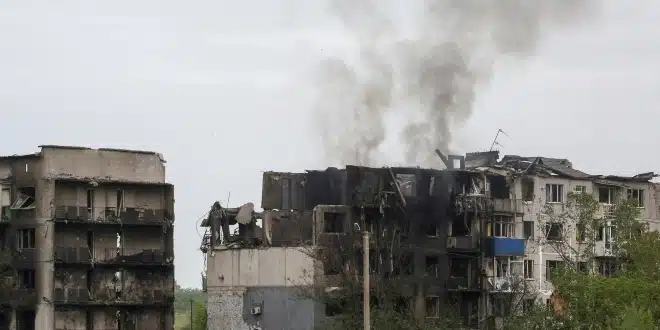On Sunday, June 1, Ukraine launched a coordinated aerial operation aimed at crippling Russian long-range aviation capabilities, striking multiple air bases across Russia in one of the war’s most extensive drone campaigns to date. The operation, known as Operation Spider’s Web, was carried out by Ukraine’s Security Service (SBU) and comes just ahead of ceasefire discussions scheduled in Istanbul for Monday, June 2.
The strikes reportedly hit four military airfields used by Russia for strategic bombers and surveillance aircraft. This marks the first time Ukrainian drones have targeted military installations as far east as Siberia, significantly expanding the geographical reach of Ukraine’s counteroffensive strategy.
Airbases Struck in Multi-Front Assault
Ukrainian officials confirmed that the airbases targeted included Belaya in eastern Siberia, Olenya in the Arctic region, Ivanovo northeast of Moscow, and Dyagilevo in central Russia. A large explosion was also reported in the vicinity of Severomorsk, home to Russia’s Northern Fleet, though the extent of the damage remains unclear.
Video footage from the strike sites appeared to show multiple aircraft ablaze and heavy smoke rising from airfields. In one instance, rows of bombers at Belaya base were visibly engulfed in flames, according to imagery released by Ukrainian security agencies.
Ukraine claims the operation damaged or destroyed a range of high-value Russian aircraft, including the TU-95 long-range bomber (known as the Bear), the supersonic TU-22M3, and A-50 early warning aircraft. If confirmed, the attacks would represent a significant blow to Russia’s long-range strike and air surveillance capacity.
The estimated financial impact varies. While the SBU reported a $2 billion loss from the operation initially, a later statement claimed that up to $7 billion worth of aircraft were affected during the drone strikes. These figures have not been independently verified, and there has been no official response from Russia acknowledging the scale of the damage.
Planning, Tactics, and Strategic Implications
According to sources within the SBU, Operation Spider’s Web was over 18 months in the making and was personally overseen by President Volodymyr Zelenskyy in his role as commander-in-chief. The mission’s objective was to target Russian military infrastructure far from active battle zones, with an emphasis on crippling strategic aviation assets.
The operation reportedly involved smuggling first-person view (FPV) drones into Russian territory over a prolonged period. These drones were concealed inside wooden mobile cabins mounted on trucks. The cabins featured remotely controlled roofs, which allowed the drones to be launched undetected from within Russian borders. Footage has surfaced showing drones lifting off from concealed positions in such vehicles.
By using mobile units inside Russia, Ukrainian forces were able to conduct strikes at great distances from the front lines while minimizing exposure to Russia’s air defense systems. This approach indicates an evolution in Ukraine’s asymmetric warfare strategy, combining intelligence operations, logistics planning, and long-range drone warfare to strike critical assets.
Ukraine has positioned these attacks as a direct response to continued Russian aerial bombardments and as a prelude to upcoming diplomatic efforts. The timing of Operation Spider’s Web, just one day before high-level ceasefire talks with Russian representatives in Istanbul, suggests it may also be intended to shift leverage in those discussions.
While the full impact of the strikes is still being assessed, Operation Spider’s Web marks a turning point in Ukraine’s ability to target strategic military locations deep within Russian territory. The operation reflects both the increasing sophistication of Ukrainian drone tactics and the broader stakes of the ongoing conflict, which is entering its third year with no clear resolution in sight.


